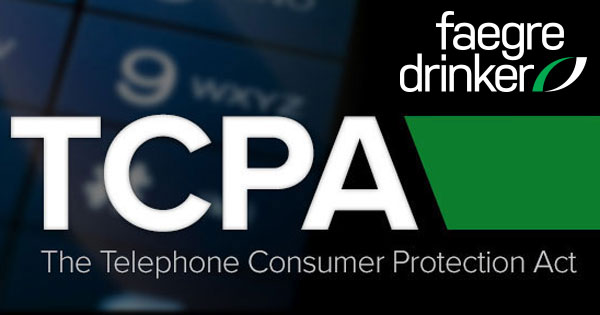Plaintiffs often employ the spaghetti-against-the-wall tactic of asserting every conceivable claim against every conceivable defendant. But as a recent decision from the Southern District of California confirms, this strategy is not without risk.
In Ewing v. Encor Solar, LLC, No. 18-2247, 2019 WL 277386 (S.D. Cal. Jan. 22, 2019), the court dismissed a TCPA claim with leave to amend because the plaintiff had failed to allege a fundamental fact: which of the six named defendants actually called him.
The plaintiff claimed that he had received unsolicited automated calls in which the caller tried to sell him solar panels. When he filed suit, however, he sued three different companies, plus three individuals (two officers of one corporate defendant, and one officer of another). One of the corporate defendants moved to dismiss, arguing that the plaintiff had failed to allege facts showing that it had called plaintiff or that an ATDS had been used to make the calls.
With respect to the ATDS allegations, the court sided with the plaintiff. Because the complaint alleged that the calls had begun with a “pause or click,” the court found it reasonable to infer that the equipment that had been used to make the calls might satisfy the ATDS definition.
With respect to who “made” the calls, however, the court found that the complaint fell short. “When suing multiple defendants,” the court explained, “plaintiff must differentiate his allegations against each defendant and should not lump defendants together without distinguishing the alleged wrongs amongst defendants.” The court also rejected the argument that certain defendants were liable vicariously or under an alter ego theory. The court noted that the complaint often used the defendants’ names interchangeably and asserted inconsistent allegations concerning which defendants controlled the others. Thus, the court concluded, “Plaintiff has failed to adequately allege the first element of a TCPA claim, namely that [defendant], or an agent acting on its behalf, called a telephone number belonging to Plaintiff.”
Ewing illustrates the core requirement of Rule 8: that a complaint must contain “a short and plain statement of the claim showing that the pleader is entitled to relief.” The court enforced this rule by sending plaintiff back to the drawing board to allege facts showing each of the six defendants’ specific involvement in making the calls. Parties on both sides of the “v” should take note of this decision.

